What's new in FEFLOW 8.1?
In this major release, FEFLOW comes with a number of exciting new software features. The highlights of the release are:
-
Well Manager: Groups and rules
-
Well Manager for Geothermal
-
New Observation Data dialogue
-
3D Supermesh Tools
-
New CAD implementation
-
New module PySMH: Access the Supermesh and Mesh generators from Python
-
New Cross-section Generator in Python
-
FePEST improvements for Observation Groups
-
Several usability improvements.
A detailed description of the major software features is presented below:
Well Manager: Groups and Rules
The Well Manager editor is the tabular viewer and provides an entire overview of any kind of wells (Well BC, Multilayer Well and Borehole Heat Exchanger) in FEFLOW.
In this release, the Well Manager receives a major extension and allow the creation of Well Groups. Groups are used to orchestrate a number of wells under certain Group Rules.
Rules are used to control groundwater and geothermal wells. Moreover, rules can be used to activate or deactivate the wells within a group. The Shared Properties rule allows the user to overwrite well properties within a group. Such as functionality makes very easy and quick to test multiple scenarios with the wells.
The rule Distributed Total Flow Rate can be used to equally subdivide a total rate (steady or unsteady) with all the group member. For Geothermal Applications, the creation of Open- and Closed-Loop System can now be done directly via the Well Manager editor (details below).

Well Manager editor: Groups and Rules.
Well Manager - Geothermal Extension
Based on the concept of the Well Manager, Well Groups and Well Rules, this release presents unprecedented improvements in FEFLOW for geothermal applications.
The new rule Open Loop allows the definition of geothermal open-loop systems in FEFLOW. Giving a number of wells and a temperature difference (constant or time-series), the Well Manager can quickly build geothermal doublet or triplet systems, and their corresponding connections between the production and injection wells. The new implementation does not require the old FEFLOW plug-in OpenLoop and therefore, it represents the state-of-the-art on modelling geothermal open-loop systems.
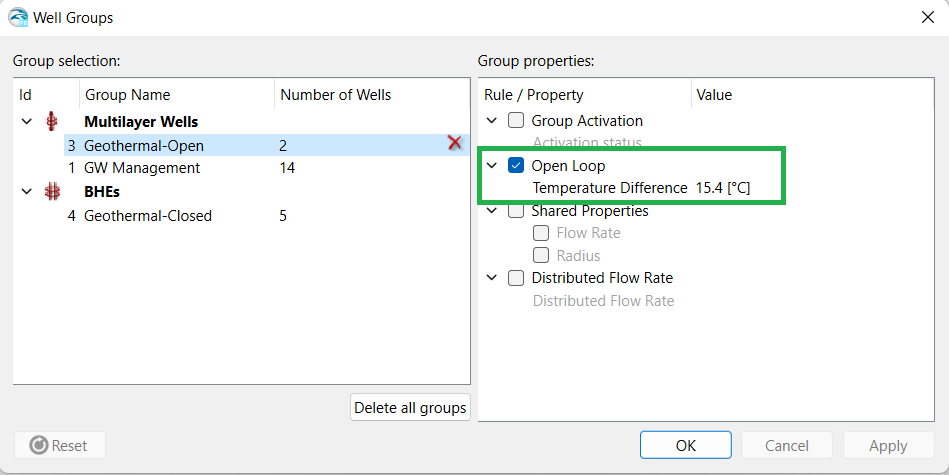
Well Manager editor for Geothermal Applications: An open-loop system.
The rule Closed Loop allows the definition of geothermal closed-loop systems in FEFLOW. The rule is applicable for a group of Borehole Heat Exchangers (BHEs). The BHEs array (or group) can be created directly within the Well Manager. The group consists on a set of properties such as connection pattern, flow rate, heat input type and heat input value. The laborious task of connecting hundreds of BHEs within an array becomes now matter of just few clicks. By using the predefined patterns such as parallel or serial, the Well Manager can link easily a large number of BHEs.
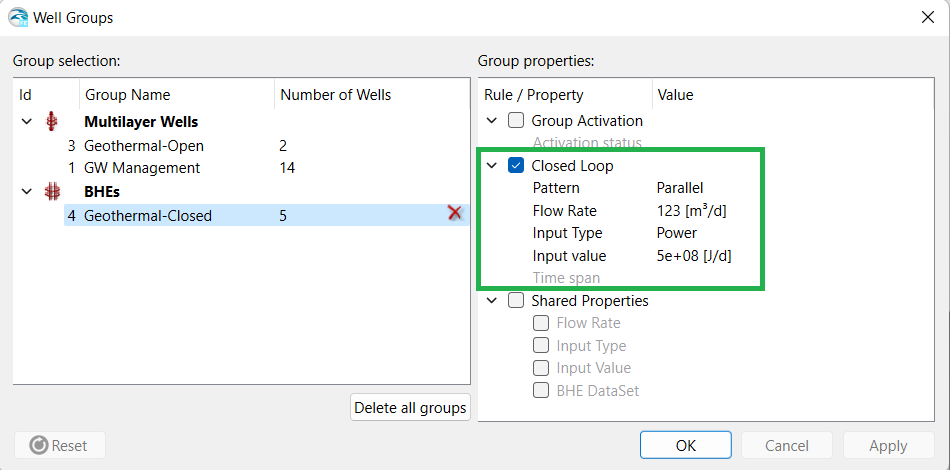
Well Manager editor for Geothermal Applications: A closed-loop system.
New Observation Data dialogue
The former Observation Points dialogue has been extended and now supports nodal budget and elemental content groups. The new dialogue is now renamed to Observation Data dialogue. The dialogue is much condensed and organized, but it does not limit you to any of the old functionalities. Observation Points can be grouped for a better organization of the reference datasets. The curve attributes for the simulated and observed (measured) values are now stored in the FEFLOW document, which brings you a much better experience at the time of comparing FEFLOW's simulated results. The recording of the nodal budget and content analysis can be activated directly from the dialogue. The user can also connect reference curves for budget and content groups directly from the new dialogue.
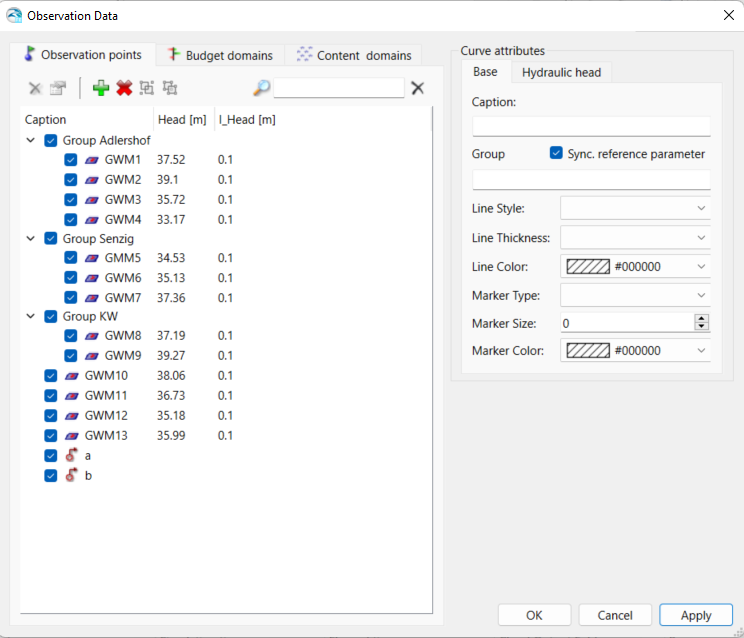
Observation Data Dialogue.
3D Supermesh Tools
To further support the latest 3D meshing capabilities introduced with the previous release, FEFLOW comes now with many 3D Supermesh tools for improving the user experience during the 3D Supermesh workflow. The tools help you to create basic geometries in 3D, select part of the 3D Supermesh domain and delete geometries. Together with the possibility to snap to 3D, the user can design basic geometries entirely with FEFLOW.
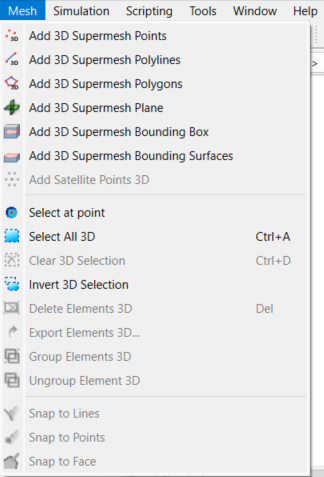
Observation Data Dialogue.
New CAD Implementation
In this release, FEFLOW comes with a new CAD implementation using the state-of-the-art packages, e.g., Open Design Alliance. The new CAD implementation supports the latest DXF file formats available in the industry and brings a new support of DWG files in FEFLOW.
New implementation covers import and export functionalities within the GUI. Moreover, FEFLOW starts including a basic functionality of 3D solids, which will be extended in subsequent releases too.

New CAD implementation in FEFLOW: Example of using a DWG file to create a 3D Supermesh.
New module PySMH
The FEFLOW Programming Interface now is extended with a new module named PySMH (Python Supermesh). The new module allows you to create new Supermesh projects or edit existing ones. PySMH supports the creation of Supermesh elements (polygons, lines and points), grouping of elements and the definition of properties. Once the Supermesh design is completed, PySMH gives full access to the 2D FEFLOW's mesh generators. On top of that, slice information can be defined and by using the FEFLOW's interpolators, the user is able to extend the model to a 3D FEFLOW problem.
PySMH is a significant milestone in the FEFLOW Programming Interface, together with the existing methods, the user has an complete workflow to build a model directly from Python. PySMH is part of FEFLOW Advanced Module (only Version 2.0) and is offered as Software Maintenance Agreement (SMA)'s benefit.

Code snippet using new package PySMH to create an empty Supermesh and add one polygon.
New Cross-section Generator in Python
The standard FEFLOW - Python interface is extended to support a new method of the document (doc), which allows to create cross-sections. By using a simple polyline, the method creates a new 2D mesh along the cross-section. The functionality is supported for 3D layered-, partially-unstructured and fully-unstructured FEFLOW models.
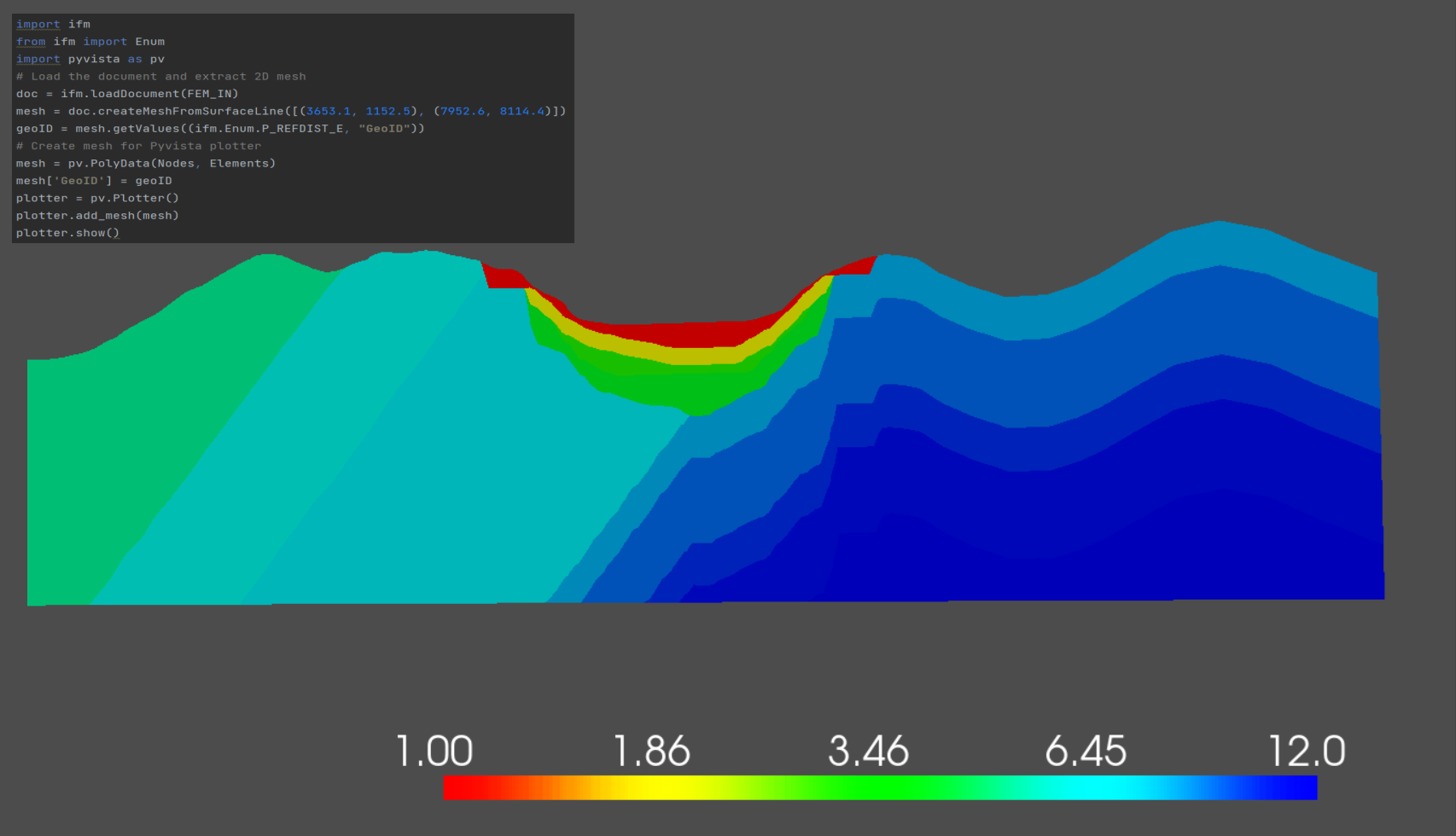
Example of cross-section extracted from a 3D FEFLOW's unstructured model and visualized with PyVista package in Python
FePEST improvements
FePEST Observation Definitions operates now with the grouping functionality of Observation Points defined in the FEFLOW FEM file. By creating the Observation Definitions in FePEST, the user can decide to import all groups or only part of them. Groups will be considered also as PEST groups. Therefore, during the model calibration process, the contributions to the measurement objective function per each group will be also separated. Thus, the user has a clear identification of what groups fit better calibration targets.
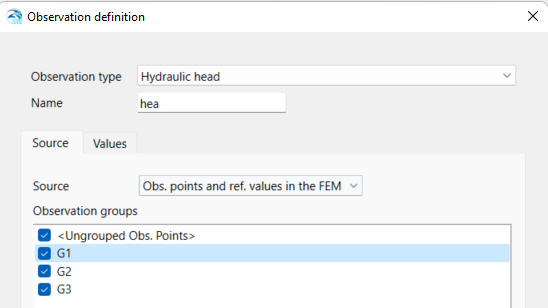
Groups of Observation Points in FePEST.
Several Maintenance Tasks
Last but not least, the release comes with a major upgrade of the graphic programming interface (Qt) used in FEFLOW. Moreover, several software bugs have been corrected.









